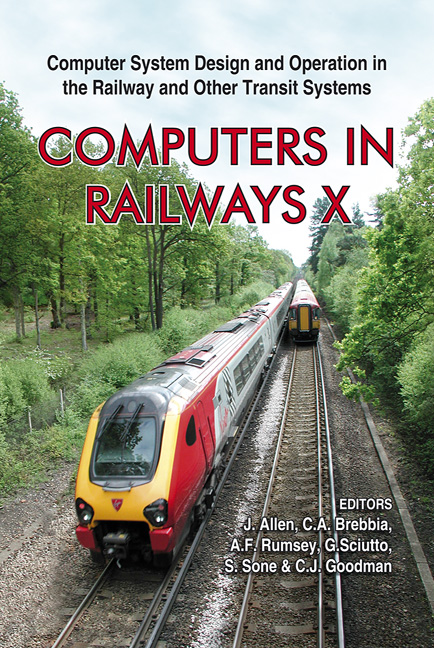Simulation Of Disturbances And Modelling Of Expected Train Passenger Delays
Price
Free (open access)
Transaction
Volume
88
Pages
9
Published
2006
Size
785 kb
Paper DOI
10.2495/CR060521
Copyright
WIT Press
Author(s)
A. Landex & O. A. Nielsen
Abstract
Forecasts of regularity for railway systems have traditionally – if at all – been computed for trains, not for passengers. It has only relatively recently become possible to model and evaluate the actual passenger delays. This paper describes how it is possible to use a passenger regularity model to estimate the actual passenger delays. The combination of the passenger regularity model with railway simulation software is described, demonstrating the possibility of predicting future passenger delays. The described passenger regularity model is run daily to calculate the passenger delays of the Copenhagen suburban rail network the previous day. The results obtained with the passenger regularity model used together with the simulation software are very similar to the daily calculated passenger regularity of the Copenhagen suburban network. As the combined method includes simulation software and reflects the actual passenger regularity, it is possible to use a combination of a passenger regularity model and simulation software to evaluate and compare future scenarios. Keywords: railway planning, timetable, regularity, simulation, passenger delay. 1 Introduction Relatively recently has it become possible to model and evaluate the actual passenger delay on large scale railway networks. The method used to model and evaluate actual passenger delays was presented in 2004 by Nielsen [2] and has since been optimised and evaluated [3, 4]. In the planning process, the passenger delays are often calculated by assuming that no passengers transfer to other trains or update/change their route choice when delay or cancellations occur. This assumption does not reflect the passengers’ travel behaviour.
Keywords
railway planning, timetable, regularity, simulation, passenger delay.





